Bok choy are prized for their crisp, vibrant leaves and fast-growing times. Some bok choy varieties will give you a healthy harvest within 6 weeks! Unfortunately, bok choy can also be prone to early flowering and bolting, a process that often causes the leaves to turn bitter and woody.
So if your bok choy is flowering prematurely, you’ll want to know why.
Usually, early bolting and flowering is caused by the bok choy plant being stressed by sudden changes in temperature or lack of water. Bok choy can also be prone to flowering if it is not absorbing sufficient nutrients from the soil.
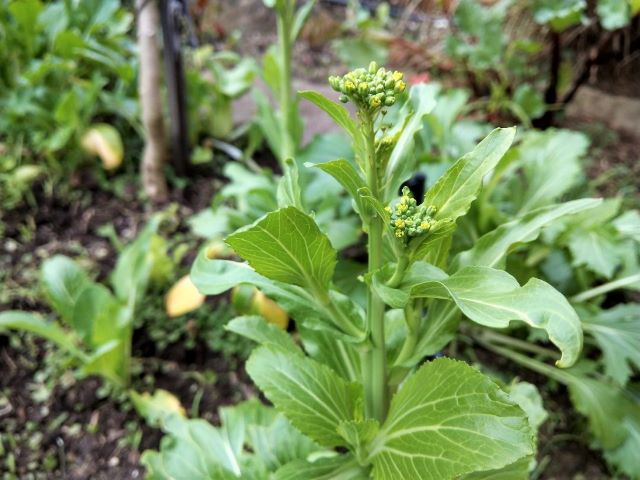
In this article, we’ll be taking a closer look at some of these common causes of bok choy bolting and flowering early. We’ll also be looking at what we can do to extend the harvest period of our tasty Asian greens!
Table of Contents
Causes of Bok Choy Flowering
High Temperatures

Bok choy is a cool weather crop, flourishing best in mild, temperate climates. It prefers temperatures between 58 and 70 degrees fahrenheit (14-21 °C). Temperatures of 75 °F (24 °C) and above could start to put your bok choy at risk of bolting and flowering, particularly more mature plants.
Even bolt-resistant bok choy varieties will struggle growing in hot summers without flowering and going to seed. During springtime, one period of unseasonably hot weather can be enough to cause your bok choy to start flowering, particularly if it’s not properly shaded or watered.
Low Temperatures
Just as with the mercury climbing too high, bok choy doesn’t like it when it sinks too low either! A sudden frost can stress your bok choy plants and push them into an early flowering cycle. Similarly, nighttime temperatures dropping below 50 degrees fahrenheit (10 °C) for more than a week or so could also cause this.
Remember, sudden temperature changes, either high or low, are likely to stress your bok choy and can lead to premature flowering (bolting). If the plant feels a need to bring its life-cycle to a close it will transfer energy from the leaves into flower and seed creation. These are its attempts to reproduce and continue the generational line.
Lack of Water
Bok choy needs consistent, relatively moist soil in order to continue growing healthy. If bok choy is not properly irrigated during periods of dry weather, this can lead to an early cessation of its growing cycle, resulting in premature flowering.
Temperature and moisture levels are not always linked, but it’s very likely that the hotter the weather the thirstier your bok choy is going to be. Your plant’s chances of bolting early will be increased if it’s both lacking water and suffering from high temperatures.
Lack of Nutrients
The most common reasons for early flowering bok choy relate to temperature and water levels. However, the plant is also going to be more prone to bolting if it’s not receiving enough nutrients from the soil.
Bok choy is a relatively hungry plant, requiring good levels of nitrogen, potassium, and phosphorus in order to drive its fast growth. If it’s overcrowded, or if the soil is depleted or deficient in nutrient levels, this can make it more likely for your bok choy to flower early.
How to Prevent Bok Choy from Flowering Early
It’s worth remembering that you’re not going to be able to prevent your bok choy flowering eventually. Bolting, flowering, and going to seed are inevitable and natural stages of the plants’ life-cycle. They even come with their own benefits for your wider garden, which we’ll be discussing at the end of this article.
However, an early flowering bok choy plant is likely to provide you with less tasty leaves than one that grows for longer. Here are some ways you can try to extend the longevity of your bok choy plants and delay the flowering process.
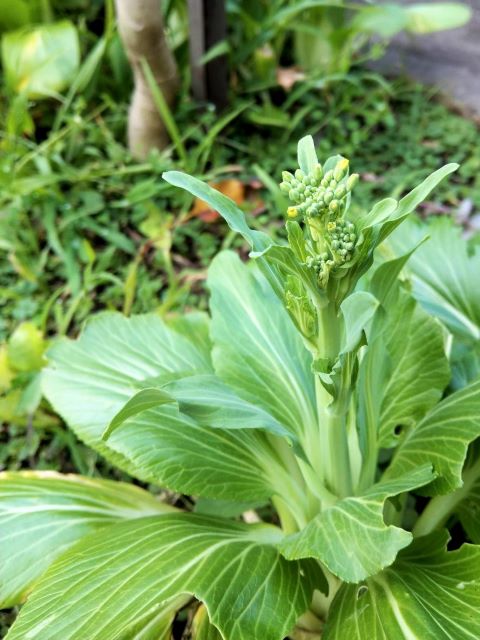
Plant Bok Choy at the Right Time
To try to maximize your bok choy’s growing season whilst reducing the risk of exposing it to high temperatures, it’s best to plant in early spring, later summer, or early fall. You can even get a head-start by growing bok choy indoors for 4 weeks or so, before transplanting it outdoors after the last frost.
Bok choy is a fast grower. Depending on the variety, it can often reach full size in anywhere between 45 and 60 days. You want to try to ensure that the plant is not reaching its full maturity at a time when temperatures are predictably high. In other words, plant as early as you can in the spring or as late as you can in the summer, after the worst of the heat has passed.
Keep Bok Choy Protected from Heat and Constant Sun
Although bok choy can survive, and be healthy, in full sun, this is only if temperature and humidity levels are both ideal. If temperatures are a bit too high and the bok choy is exposed, you could risk an early bolt or flowering.
In hotter, sunnier climates, consider growing your bok choy somewhere where it is partially protected from the sun during the hottest hours of the day. Be creative with your planning – are there any other plants like tall beans or shrubs that can offer partial shade? Similarly, can you plant your bok choy in pots or containers that allow you to move it out of the sun when it gets particularly hot?
If your bok choy is placed somewhere where the sun could prove relentless, consider investing in some shade cloth like this one. This can ensure that the bok choy plant is never exposed to full sun at all, keeping it in partial shade conditions.
Keep your Bok Choy Well Watered
You want to ensure that your bok choy’s soil is slightly and consistently moist. Water more regularly if temperatures are regularly climbing above 70 °F (21 °C).
A period of drought, even a relatively brief one, can be enough to send bok choy plants into their flowering stage.
To avoid overwatering, try not to soak the bok choy plant if the soil is already damp, particularly in ground that drains poorly. You don’t want the soil to be soggy or clogged.
Maintain Nutrient Levels in the Soil
Ensuring that your bok choy is well fed can delay the flowering process and extend its growing season. Bok choy can benefit from a good, all purpose organic fertilizer being applied several weeks into its growth. It will also benefit from aged compost having been dug through the ground a week or so before planting.
Plant Bolt Resistant or Dwarf Varieties of Bok Choy to Extend Your Harvest Season
Choosing your varieties carefully from a reputable, organic seed stockist can be a good way of reducing the chances of your bok choy flowering before you’re ready.
‘Joi choy’ and ‘Win-Win’ are both bolt-resistant varieties that are likely to cope with hotter, drier weather more resiliently. It’s worth noting, however, that even these varieties won’t be able to stand up to severe spells of heat or drought. They can, nevertheless, be planted slightly later in the season if you want to try to retain a crop through the summer months.
At the same time, dwarf varieties such as ‘Mei Qing choy’ or ‘Ching-Chiang’ can come to full harvest in as little as 35 days. You could consider planting bok choy varieties like this early in the season in order to have an early crop, before switching to other, more bolt-hardy varieties later in the spring.
How to Slow Flowering Once Your Bok Choy Begins to Bolt
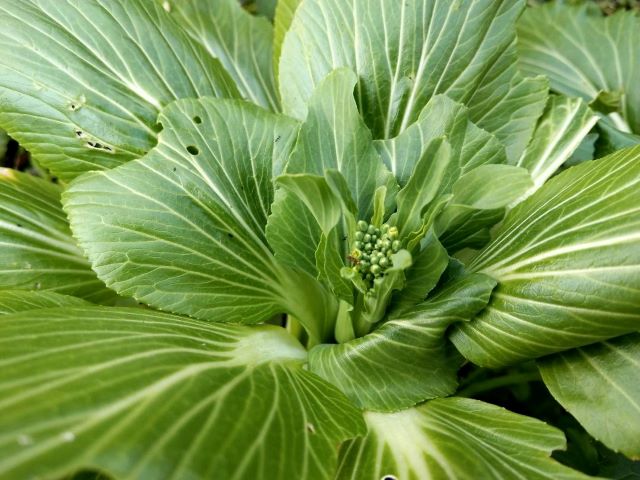
Once your bok choy starts to send up a central flowering stalk, it’s only going to be a matter of time before it goes to seed. You will not be able to stop or reverse this process entirely.
However, by cutting the central flower stalk off, you can potentially extend the life cycle of the plant by a short period. When a plant like bok choy bolts, energy and nutrients are diverted from healthy leaf production towards flower stalk creation.
By pruning back the stalk, you can help preserve some of this energy in bok choy leaf production and maintenance. This can allow for leaves that remain edible and tasty for longer.
What Can You do if Your Bok Choy has Already Flowered?
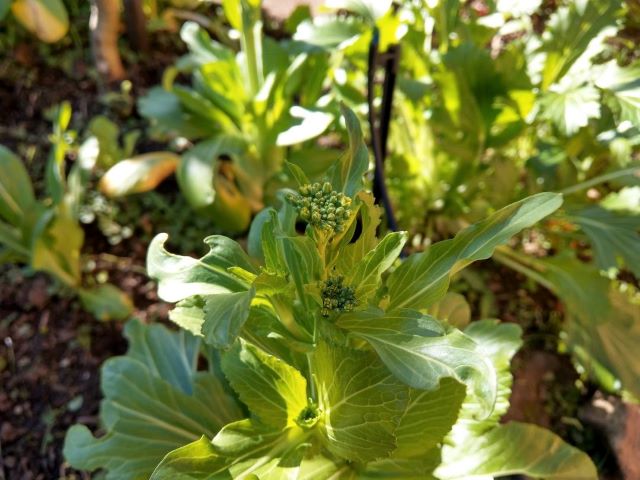
The good news is that, unlike some other leafy green species, bok choy flowers are actually edible and even tasty. Although not as popular as the versatile, grillable, crispy leaves, the buds themselves have a peppery, mustardy note to them. Some professional chefs even procure them as gourmet ingredients!
Try sprinkling bok choy flowers over salads for a mustardy kick or mixing with soft cheeses.
You can also continue to eat the leaves of your bok choy whilst it is in the process of flowering. Although the leaves are likely to turn gradually more woody and bitter, they remain edible and you may find the taste enjoyable enough to harvest.
Finally, it’s worth remembering that bolting is a natural process for the plant. It signals the end of one life cycle and the hopeful beginning of another. You can always let your bok choy do its thing and flower away to its heart’s content.
When bok choy and other leafy plants flower, they attract bees and other pollinating insects to your garden. Seeds that are produced can encourage other wildlife such as birds, creating a healthier ecosphere overall and increasing the biodiversity of your garden.
If allowed to flower, bok choy can even self-seed in your garden. Below is an example growing in my garden. It wasn’t the most ideal spot, hanging over the footpath but as you can see, it is a beautifully heathy bok choy plant.
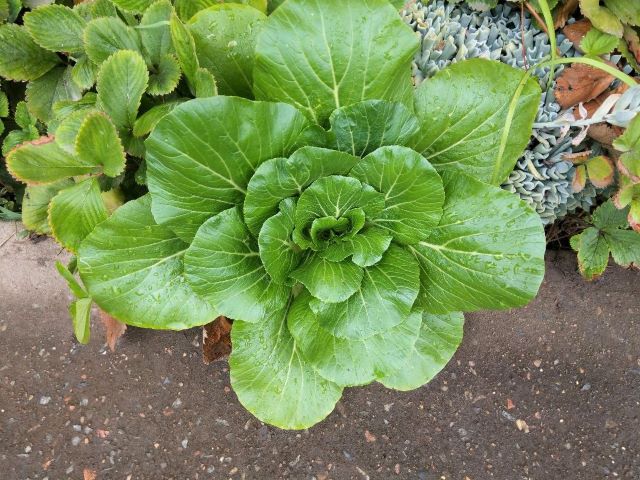
An organically diverse garden is a healthy and happy garden, so don’t worry too much if you see your bok choy flowering a week or so before you’d hoped. Nature’s just doing her thing!
Related reading:
